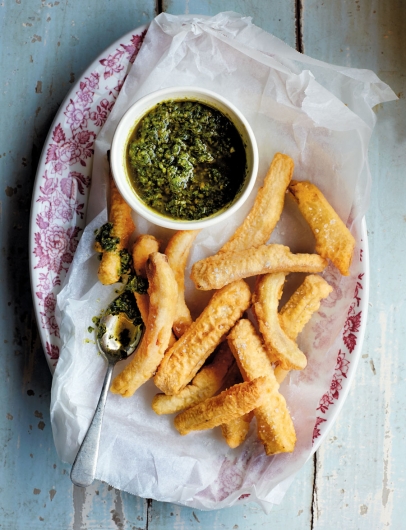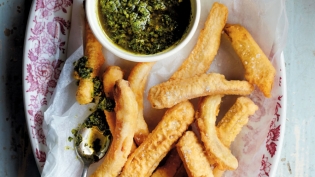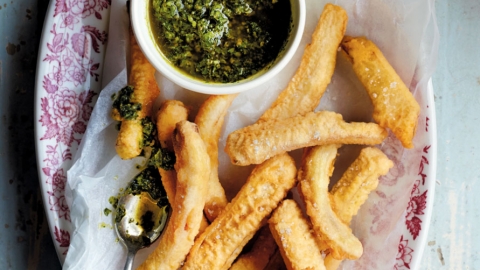What's in season-Cardoons
The Artichoke’s Less-Known Cousin Gets Its Moment
Cardoons, which taste like artichoke hearts, are one of those forgotten vegetables that seem to be having a resurgence of popularity, and I am looking forward to finding them in our markets this winter.
Closely related to artichokes, cardoon plants look much like artichoke plants, with long, pale silver, deeply notched leaves on either side of a thick rib. Both members of the thistle family eventually “flower” with beautiful purple blossoms. Unlike the artichoke, it is the ribs of the cardoon that are eaten, rather than the buds of the plant. The ribs of the innermost leaves and the heart of the cardoon plant are the most tender, but the inner ribs are thinner than those of the outer leaves, so more are required to make up a dish.
At the market, cardoons are often sold by the bunch, looking rather like large, thick, pale whitish-green celery bunches, sometimes measuring up to two feet long. These have the tender hearts inside and are the ones I prefer. However, cardoons are sometimes also sold by the stalk.
In both France and Italy, cardoons are a popular regional vegetable. They are most typically used in gratins or breaded and fried and served with a sauce. A gratin of cardoons, classically made with bone marrow and topped with cheese, is one of the traditional dishes of the Gros Souper or Provençal Christmas Eve dinner. In northern Italy, boiled cardoni, as they are called there, feature as one of the vegetables to dip into an anchovy-laden bagna cauda sauce.
Regardless of size, however, it takes some work to prepare cardoons. First, the leaves need to be trimmed from the ribs and the strings covering the back of the ribs peeled back, much as you would remove strings from a celery stalk. Even then, they are not quite ready to eat. An initial blanching removes any residual bitterness, then they can then be cooked until tender. The finished dish has both the taste and texture of artichoke hearts.






